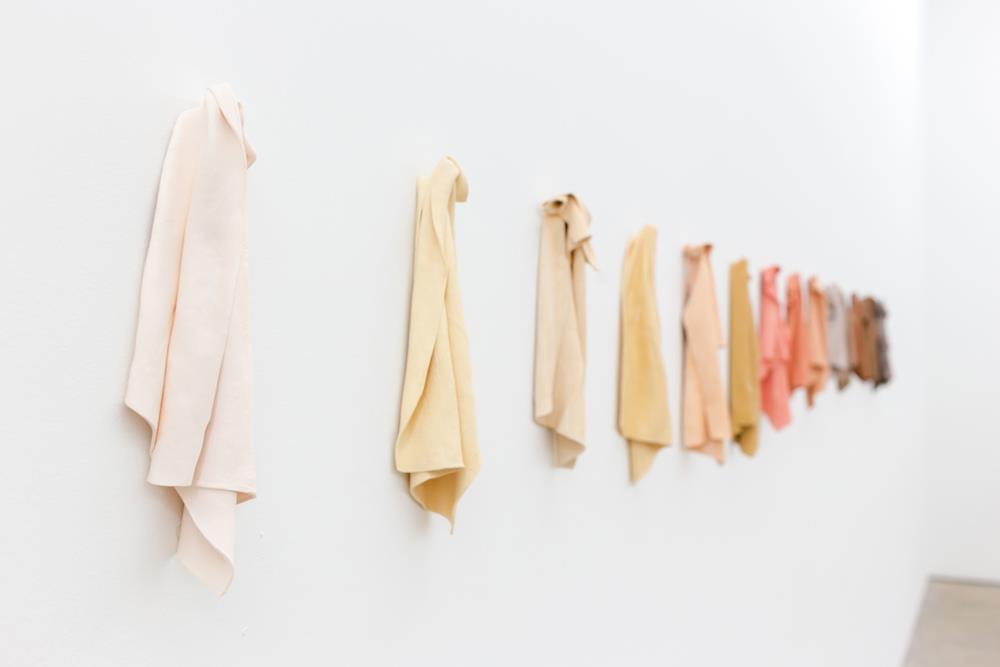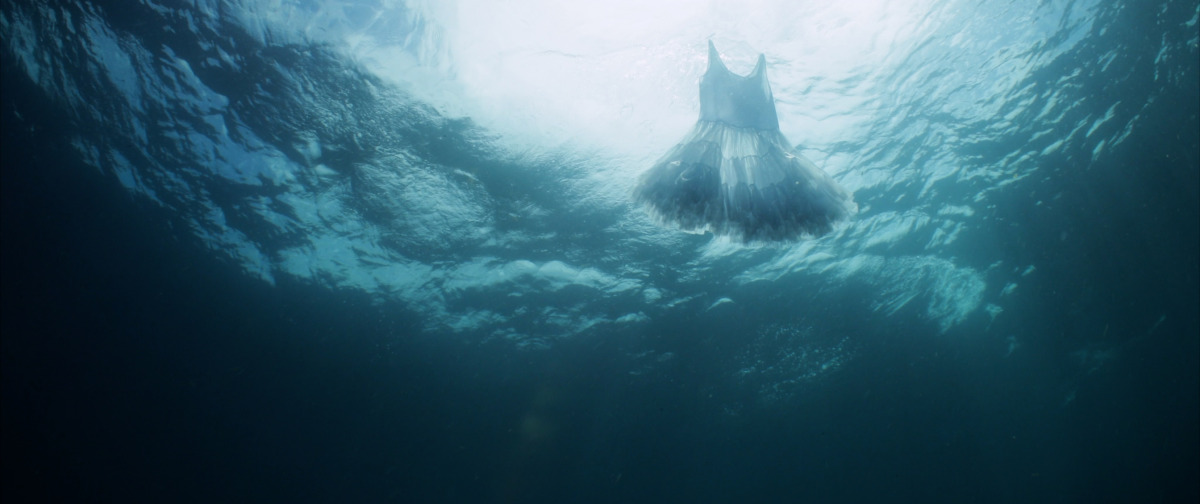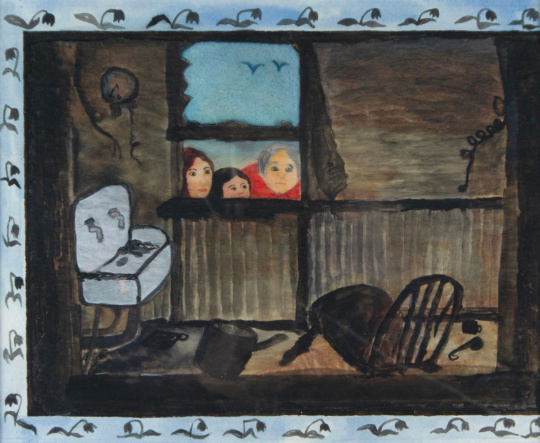
For Juana Valdés, her experience migrating to the United States in 1971 has significantly informed her thirty-year career. In Embodied Memories, Ancestral Histories at the Sarasota Art Museum, she continues to investigate not only her relationship to her homeland of Cuba, but also the colonization of the island, and its impact on gender and race. Through her use of sculpture, video, photography, printmaking, and ceramic, Valdés foregrounds the links between her personal history and social and political structures.
As visitors walk into the space, they encounter a sea of white and blue, with pieces like The World Upside Down and Flat (2007-2009), The Journey Within (2003), and On the Malecón (2000), all symbols of the journey across the Atlantic both Cubans and Africans have endured. In the next room, the work begins to address the relationship between migration, race, and colonialism via shades of pink, red, and brown, with figures populating canvases. Objects like collected figurines feature throughout the five rooms, creating a bridge between the spaces and works. While the images that inhabit the frames in the first room feature sites in Cuba, in the subsequent room, figures are central to the screenprints, bone china, and digital photographs.

Notions of migration and materiality are central to Terrestrial Bodies (2019), in which Valdés traces her ancestral lineage through the results of her mother’s 23andMe genetic testing. Lining every wall of the room is a collection of small objects, which as the accompanying wall text shares, were “made as souvenirs for consumers in the Global North, using labor and resources from the Global South.” The sight is arresting. Looking in any direction, the field of view is flooded with vases, small sculptures, wood carvings, and china from around the world. Similar to Betye Saar’s examination of “collecting” and its association with migration, Valdés challenges this history, asking visitors to consider their participation in the preservation of this practice. By framing them as mass-produced collectibles, the artist highlights the reproduction of these objects with cultural importance that can be bought during travel or in a big-box store; it is a knickknack made solely for decorative purposes and then discarded when it is no longer of use. Through the gathering of these items, Valdés asks questions about coloniality that go beyond the actual objects. Further, the piece underlines the wickedness associated with capitalizing on the colonization of material culture and how companies employ individuals from the same nations to participate through their labor.

Included in the exhibition is one of Valdés’ most recognizable pieces, Redbone Color China Rags (2023). From a distance, the rags, with their soft shades ranging from pale pink to dark brown, give the impression of cotton fabric, the same kind that would be used to clean someone’s home. Yet, up close it becomes evident that the pieces of cloth are made of bone china. With the range of hues included, the installation appears to be referencing skin color, but putting it into the context of migration, the artist is also touching on the disproportionate representation of immigrant bodies, particularly women, in domestic spaces. Valdés foregrounds the disparity in how domesticity is available to women depending on their race and social class. This technique of shaping bone china into an imitation of cloth is also repeated in The Skin of My Back is the Color of Sapphire (2022). Unlike the seemingly clean surface of the rags in the aforementioned piece, in this work, the artist depicts a gray, almost black rag that looks as if it has been used. There’s a cruel irony in the color of the rag being the darkest, but also being the only one with discoloration, drips, and stains, a reminder of who commonly utilizes them, and their position in society.

With these two pieces, Valdés illustrates how colonialism shouldn’t just be examined through the lens of the occupied nation, but in conjunction with emigration and the impact it has on those who leave. The threads of colonialism extend far beyond the point of origin. In Sweet Honesty-Tender Pink (1997), the artist further utilizes paint colors as symbols of race by challenging and interrogating how notions of race whitening, introduced during the colonial period, have permeated society, even in things as innocuous as shower curtains. The installation features wallpaper in a multitude of colors that resemble those seen in Redbone Color China Rags. Over the wallpaper are stenciled images of “exotic” women that the artist has enlarged to highlight how faces and bodies used for consumer products are often Europeanized.
Anywhere in the room that the visitor turns, they are enveloped by colors and images, echoing ideals of beauty in Western society. Along the bottom of the walls are the corresponding paint colors. Names like ‘ballerina’ and ‘tender pink’ are assigned to light pinks while ‘mincemeat’ and ‘devil’s food’ are reserved for dark browns and deep reds. To equate colors for lighter skin tones with things that evoke femininity is to position those who phenotypically belong to these groups as the ideal woman, while those with darker tones are marked as things to be devoured.
With Rest Ashore (2020), an immersive installation featuring a sail and shipping palettes located in the left room, the show comes to an end. As visitors walk in, they are thrust into a state of uncertainty, and for some, discomfort. It’s dark, the only sources of light coming from the doorway and an accompanying 4K single-channel video titled Eternal Sunset (Eterno resplandor del sol) (2020). The video depicts the migratory experience many Cubans undergo that is projected onto the sail. Composed of aerial, underwater, and above-land shots of lost or discarded belongings like suitcases, clothes, and a teddy bear floating in the ocean, these stand as emblems of the life migrants had before leaving their homes and the items they hoped would help mark the beginning of a new life. The wrinkles in the sail coupled with the movement of the water evoke a feeling of seasickness. The video places visitors on the boat as it sways back and forth between Cuba and the United States.





